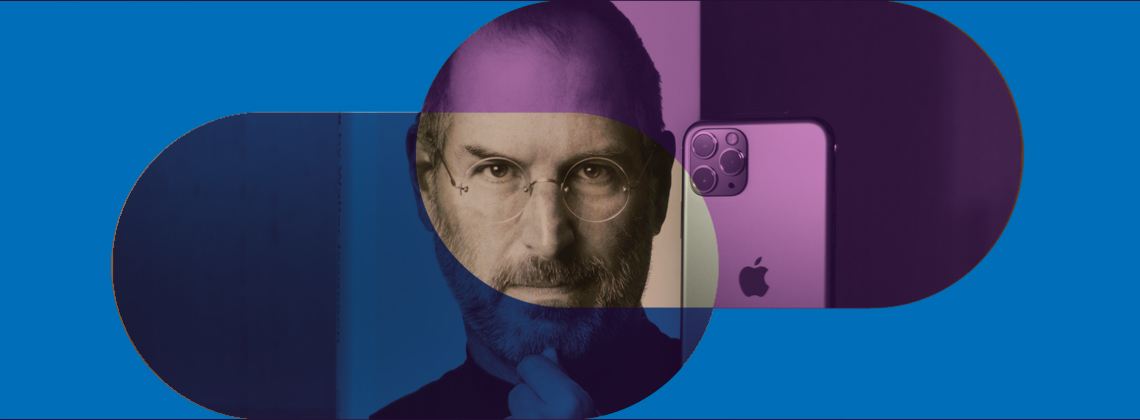Case Studies
Why did Apple’s board fire Steve Jobs in 1985?

Why did Apple, the company Steve Jobs founded, fire him in 1985? The reasons are complex but quite simple when you boil it all down. Apple fired Steve Jobs because he had a massive disagreement with the CEO and the board. It’s an excellent case study in corporate governance education.
There is perhaps no more extraordinary corporate success comeback story than that of Steve Jobs and Apple.
In 1985, Jobs was the co-founder and visionary of Apple yet was unceremoniously fired by Apple’s board.
Eleven years later, he would be asked to return and rebuild Apple into one of the most unique and successful businesses and brands of all time.
Jobs’ story would become an American classic and one that would have ample lessons for anyone interested in boardroom dynamics.
First, however, it begs the question: What happened? Why did Steve Jobs get fired?
Steve Jobs hired the man who would later fire him
Steve Jobs and Steve Wozniak famously started Apple in a garage and began to develop their unique business strategy.
The two men had a rough breakdown of business responsibilities: Jobs handled business and creativity, while Wozniak engineered their creations.
Of course, the responsibilities weren’t entirely as set as this, but this rough breakdown allowed Apple to get off the ground and begin creating.
The problem? Both Jobs and Wozniak were young men without any real business experience, and they needed expert guidance if they were going to get their company off the ground. So they built a board and brought business experts to help get the fledging tech company going.
And that they did. Apple began to churn out revolutionary computer products, led by the genius of Jobs and Wozniak. Jobs, however, wanted to be CEO. The board pushed back.
Part of the push-back was Jobs’ way with people, which was allegedly terrible and autocratic.
Jobs famously pushed people too hard, rubbed people the wrong way, and burned bridges left and right. He was building an incredible business but making everyone around him unhappy.
As a result, Apple’s board believed he wasn’t ready for the CEO role.
In 1983, Jobs recruited the CEO of PepsiCo, John Sculley, to work for Apple.
Unfortunately, this hiring would only accelerate Jobs’ demise.
Apple fired Steve Jobs in 1985 because of a clash with the CEO
Jobs clashed with Sculley after two new products — the Lisa and the Macintosh — failed to live up to sales expectations.
As a result, Jobs was moved away from the Macintosh product and was furious about the change, taking his case straight to Apple’s board of directors.
This really ruffled the feathers of the people on the board.
Shortly after the attempted corporate power play, one of two things happened. Jobs was either fired by the board of directors immediately after his rant (if you believe his side of the story) or quit shortly after (if you believe Sculley’s side).
The result was the same. Jobs was out, and the company was without the input of its iconic founder.
Jobs would then found NeXT, a computer company that produced high-end computers.
Time would be a flat circle. In 1996, floundering and after failed talks to sell itself, NeXT sold to Apple for $429 million.
This purchase would bring Jobs back to the company he originally founded.
After a massive stock sale tanked the price of the company’s stock, Apple’s board fired its then-CEO, Gil Amelio.
To replace him, the board hired Steve Jobs. And what a great hire that turned out to be.
Should Apple’s board have done more to keep Steve Jobs in 1985?
Sculley would later appreciate Jobs’ effective leadership, calling him “the greatest CEO ever”. However, he also said he was too inexperienced in 1985 to recognise Jobs’ potential role as a visionary.
Sculley would also say that he failed to appreciate what effective leadership was.
The fact that Apple fired Steve Jobs leads to a more fundamental question – What should the board have done at its meetings? How did Jobs’ firing fit into their business strategy? Could the board have found different members to manage its affairs better?
To a large extent, that’s a difficult question to answer. Hindsight, after all, is 20/20.
However, a few things are clear from the board’s actions. Chief among them is that they would have benefitted from having the ability to see past Jobs and Sculley’s dispute.
The two men were locked in a power struggle for control of the company. Jobs wanted to move Apple into the realm of personal computers, while Sculley felt that the move had not been a success.
Moreover, the company had different visions of what direction Apple should have moved and how it should get there.
However, strategic decisions like this are made by the board. They must manage risk, and this led to Jobs’ firing.
This brings us back to a fundamental issue. A board must be adequately prepared and have appropriate director training.
The role of the board and its loyalty are not to one person or even the pure bottom line but the business’s long-term success.
This means that a board must be trained, understand the essentials of corporate governance, and be able to see through corporate disputes.
To do this, a board needs continual support and formal training.

